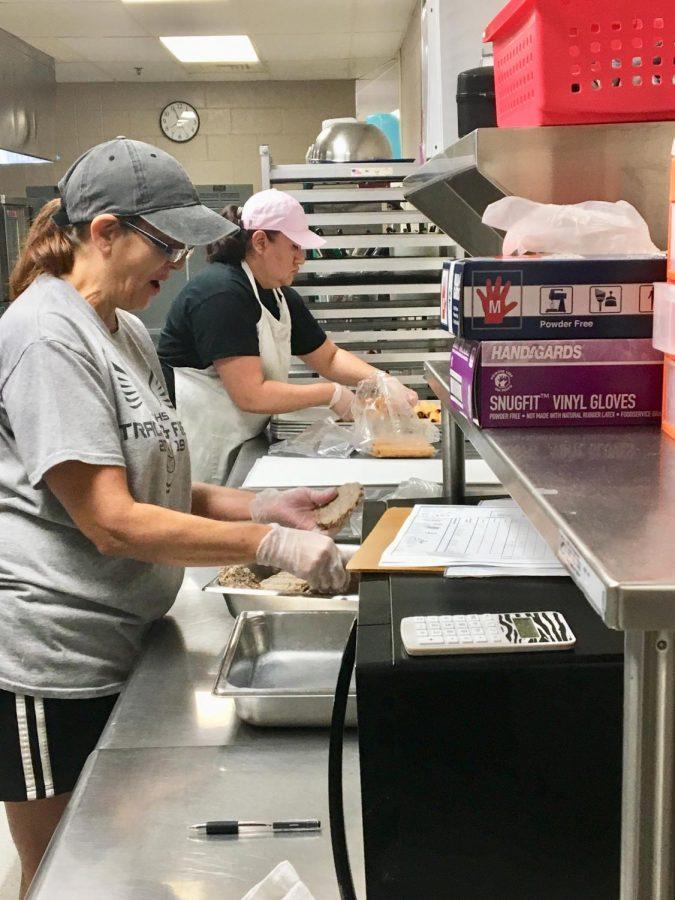More Options Versus Healthy Foods
Although Maize South has plenty of options for snacks, there has to be a few more important menu changes to accommodate those who seek healthier options.
Maize South cafeteria ladies prepare chicken nuggets for school lunch early Friday, September 6.
September 10, 2019
When former First Lady Michelle Obama enacted the Hunger Free Kids Act in 2010, schools nationwide authorized funding for child nutrition and school meal programs. As a result of this act, Maize South High’s food menu has changed dramatically.
At Maize South, students have frequently complained about the whole grain snacks offered for both breakfast and lunch. At the start of this school year, we have already been served less whole grain and gluten-free options than previous years. Drinks available for purchase have continued to be either zero sugar or diet, which provides students with low calorie drinks.
¨We are getting out of serving all healthy foods now, Pizza Hut day we can give regular pizza and the Pop-tarts are all regular now,¨ said Michelle Sanborn, head cook of Maize South’s cafeteria.
Although Maize South has plenty of options for snacks, there has to be a few more important menu changes. Last school year, the serving area handed out peanut butter and jelly sandwiches for students.
Most teenagers would not be satisfied with gluten free bread as their lunch. Junior Ralph Corriveau is pretty sure that most students are not on board with the gluten free craze.
“I hate the whole grain snacks, I don’t know anyone who like them,” said Corriveau.
Students are also given free milk as a part of their lunch. However, students with lactose intolerance are not able to drink the milk and instead must pay for a different drink that their body can fully digest. Providing a free drink with a meal purchase is the right idea, but charging lactose intolerant students for getting a drink other than milk is not necessarily the fairest way to do it.
Instead of focusing on giving students healthier substitutes of food, schools should aim their efforts to provide their student body with food substitutes that they can digest easily for the same price.







german • May 18, 2020 at 4:55 pm
There’s a saying”our body is our temple and we need to take proper care of it to lead a healthy life”. Fantastic food habits would be the essential to construct your entire body and lead a happy and healthier life. In this technological world what’s machine produced and food things also did not escape out of it. As soon as you find the foods which are healthy for you, you want to appear over your food customs. The closer a food is to its natural condition; the better it’s for you. Vegetables have plenty of vitamins and minerals inside eat more green, orange and yellow vegetable. Healthy foods create your immune system strong and make you feel powerful, refreshing and good all time. Spicy foods contribute to different ailments and lead to obesity. Knowing about the nutrition and their advantages and their food resources belonging to every nutrient can allow you to select up the ideal foods to be included in your diet plan. Specific nutrients are good for development, particular nutrients are great to decrease weight naturally and particular nutrients are great to decrease the deficiencies within the human body and allow you to look good.so have you heard of "WAPTRICK" it is one of the most essential, popular, and most used websites which gives users free accessibility to download their favorite mobile application on their mobile device